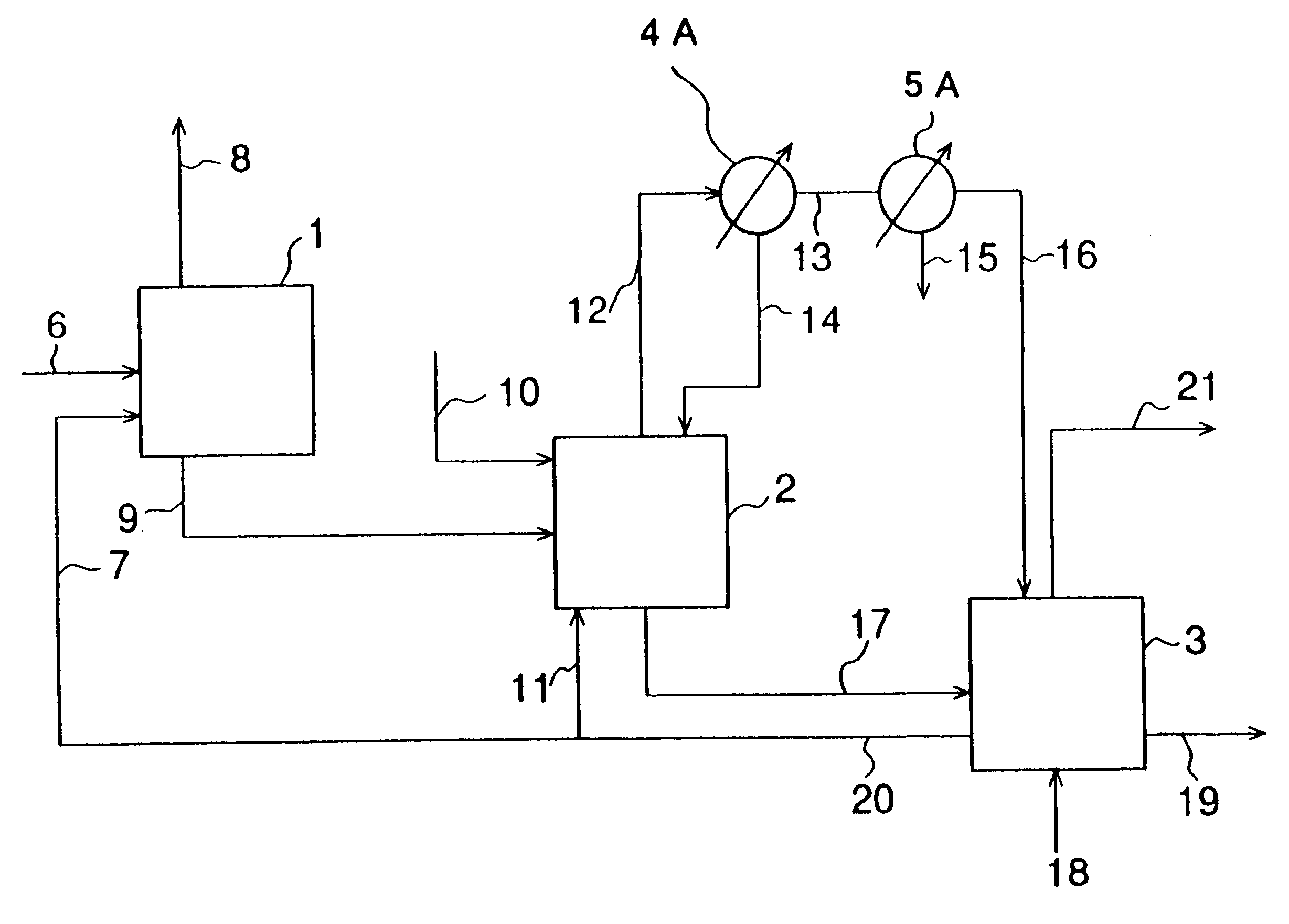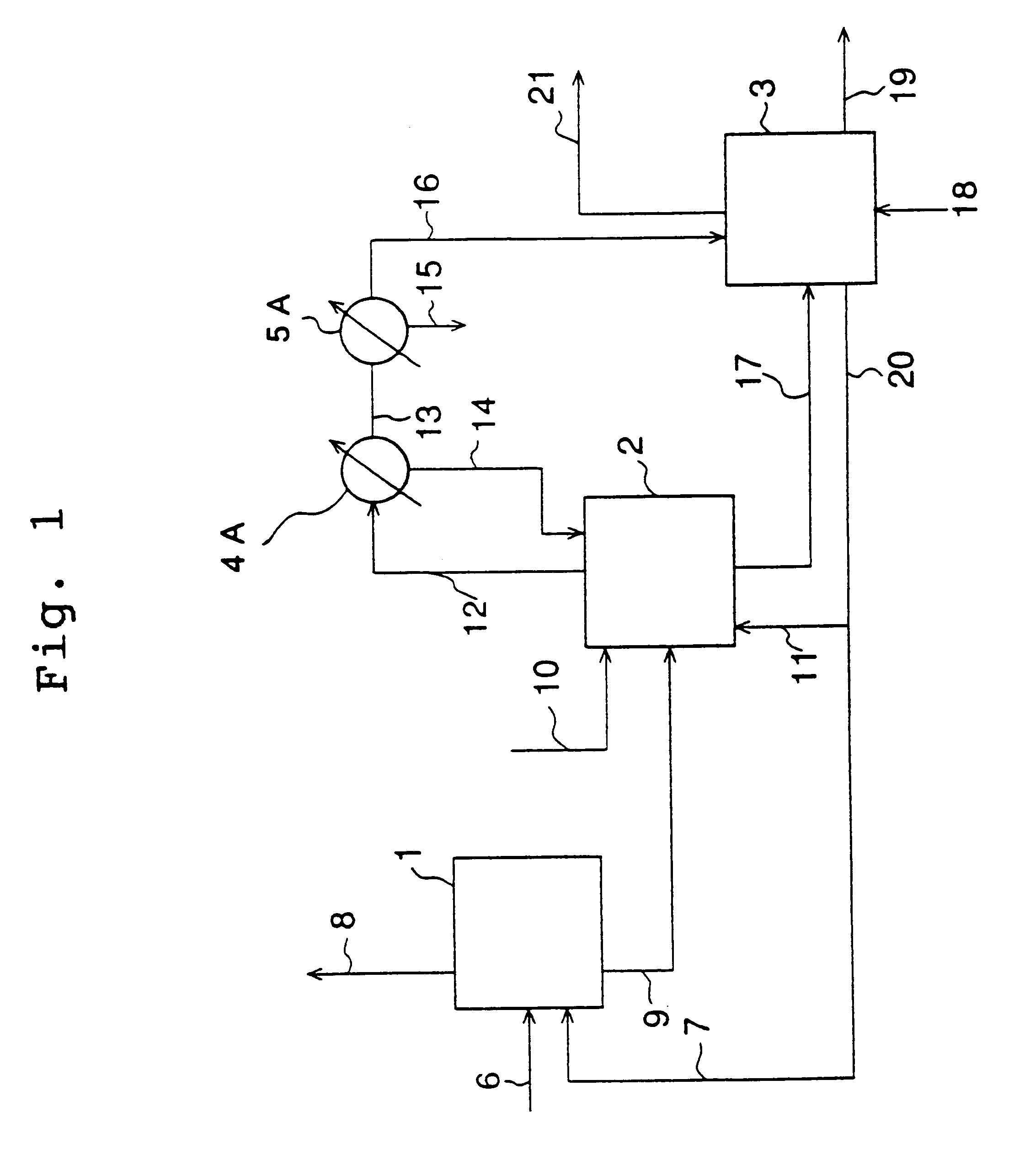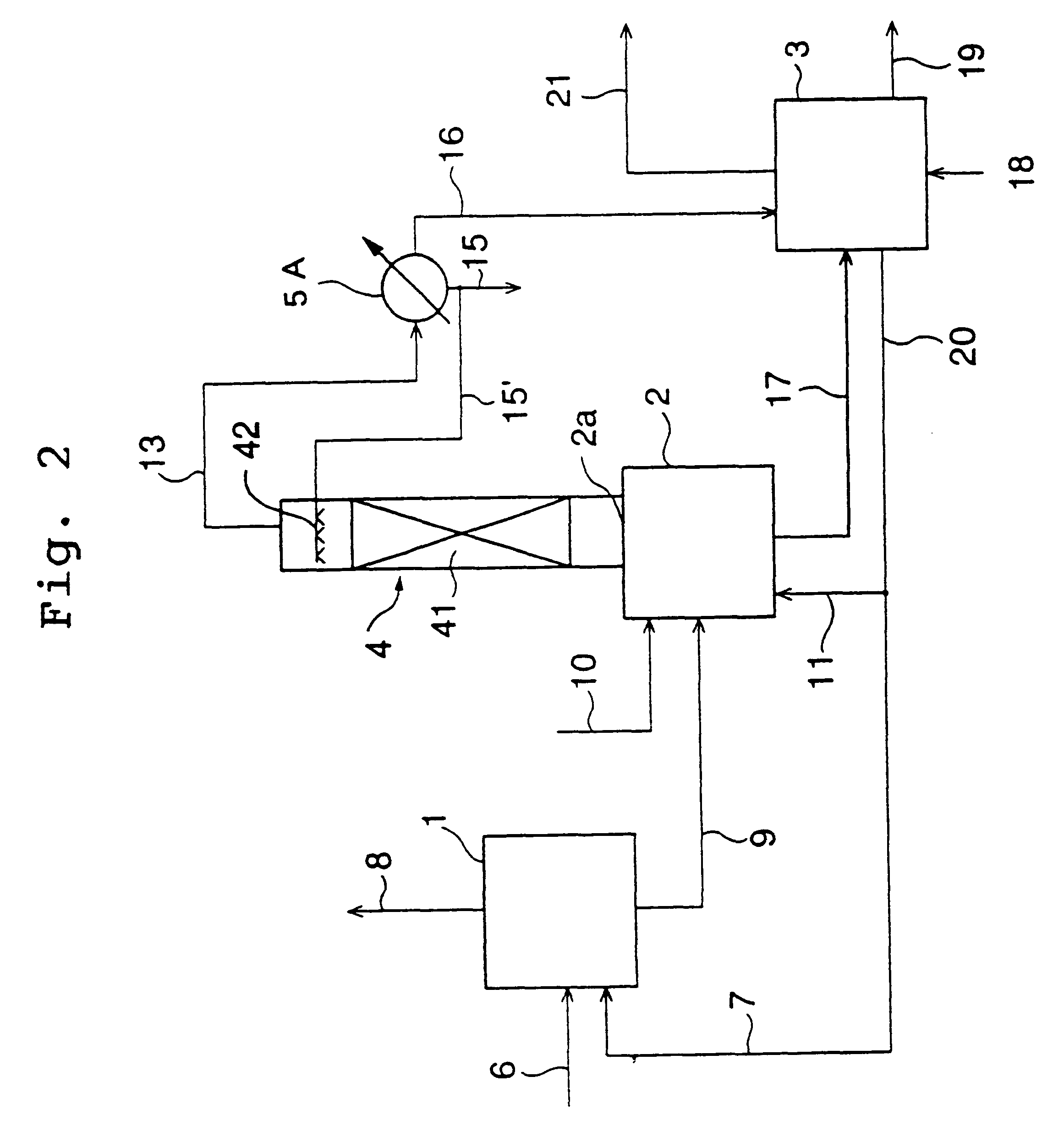Method and apparatus for reclaiming oil from waste plastic
a technology of oil extraction and plastics, applied in plastic recycling, recycling and recovery technologies, hydrocarbons, etc., can solve the problems of unstable oil obtained solely from pyrolysis of plastics, high cost, and economic problems
- Summary
- Abstract
- Description
- Claims
- Application Information
AI Technical Summary
Benefits of technology
Problems solved by technology
Method used
Image
Examples
Embodiment Construction
We shall next give a detailed explanation of this invention.
The phrase "waste plastic" which is used in this application includes most plastics which are sorted out of urban trash. Most of these will be thermoplastic resins (polyethylene, polypropylene, polystyrene, etc.), which may be mixed with some percentage of polyvinylchloride, various PETs, thermosetting resins or paper and various types of foreign matter typically found in garbage.
Much of the plastic waste typically found in industry comprises the residue from die-casting plastic products. If the waste plastic is one that contains chlorine, such as polyvinylchloride, the oil extracted by pyrolysis will be of poor quality, and the chlorine may cause the catalyst to degrade or the components to corrode. To safeguard against this, the chlorine must be separated and removed before the plastic is pyrolyzed.
Virtually all chlorine in waste plastic is contained in polyvinylchloride and polyvinylidene chloride. As is well known, this...
PUM
| Property | Measurement | Unit |
|---|---|---|
| temperature | aaaaa | aaaaa |
| temperature | aaaaa | aaaaa |
| temperature | aaaaa | aaaaa |
Abstract
Description
Claims
Application Information
 Login to View More
Login to View More - R&D
- Intellectual Property
- Life Sciences
- Materials
- Tech Scout
- Unparalleled Data Quality
- Higher Quality Content
- 60% Fewer Hallucinations
Browse by: Latest US Patents, China's latest patents, Technical Efficacy Thesaurus, Application Domain, Technology Topic, Popular Technical Reports.
© 2025 PatSnap. All rights reserved.Legal|Privacy policy|Modern Slavery Act Transparency Statement|Sitemap|About US| Contact US: help@patsnap.com



